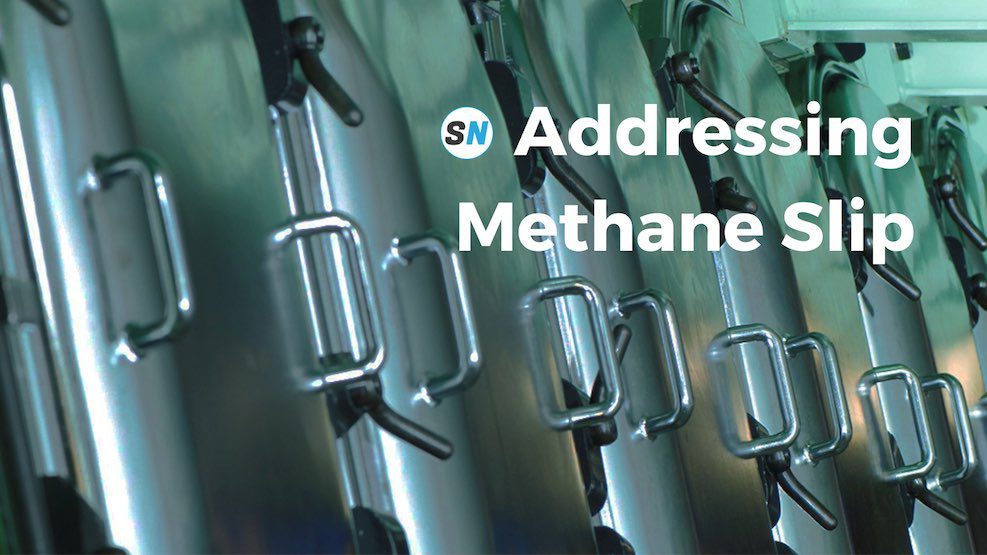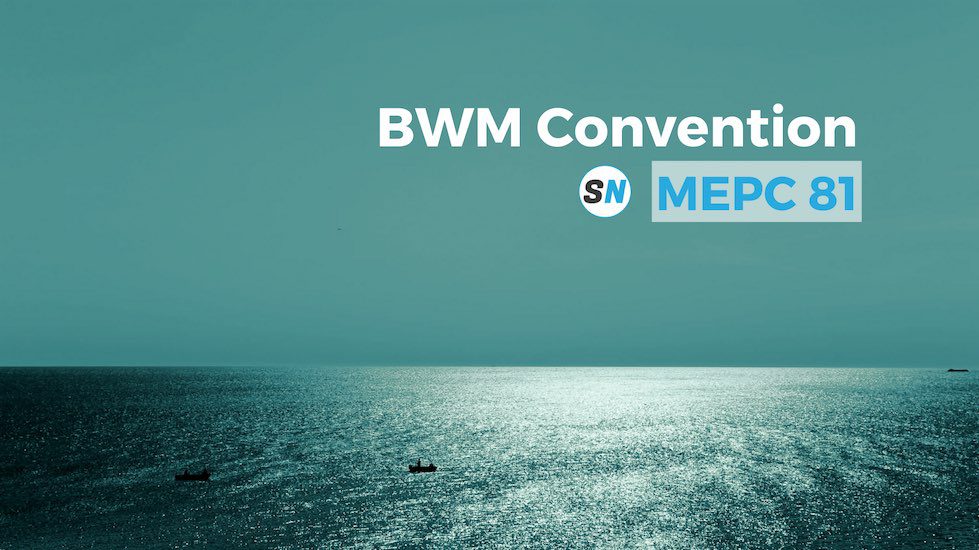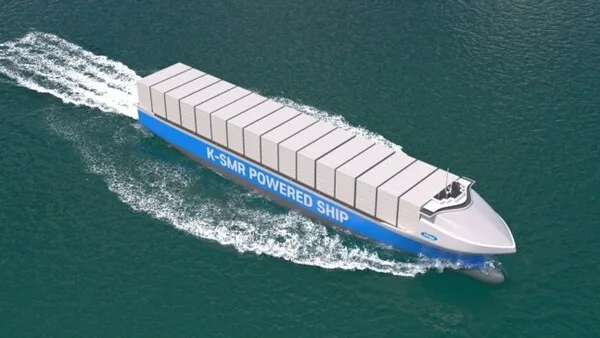29 April 2024
New Era for Boil-Off Gas (BOG) Management

What are the new developments for enhanced flexibility and efficiency of cargo and Boil-Off Gas, BOG management on LNG carriers?
Table of Contents
Introduction
With its increased focus on environmentally friendly designs and operations, the global LNG carrier fleet has accepted boil-off gas management systems as the de facto standard for today’s LNG carrier designs. Pål Steinnes, Heads of Sales and Business Development for Midstream and LNG, Wärtsilä, Norway, examines developments that have been made for enhanced flexibility and efficiency of cargo management on LNG carriers.
Over recent decades, natural gas has become a vital energy source for the world. Even though much of it is carried through pipelines, a significant portion is still liquefied and transported across the globe on purpose-built LNG carriers.
Since LNG has a boiling temperature of around -163˚C, one of the main challenges when transporting LNG is the cryogenic temperature level required to maintain the cargo in a liquid state.
Boil-Off Gas (BOG) Management
As the LNG trade consists of different parcel sizes and ships, different concepts are applied for different trades, but all large-size LNG carriers (> 40 000 m3) are fitted with containment systems that allow an operating pressure only slightly above atmospheric. Therefore, handling the boil-off gas (BOG) generated as a result of heat ingress created by the temperature difference between ambient surroundings and the cold cargo is one of the biggest operating challenges onboard LNG carriers. Venting of natural gas into the atmosphere results in direct emissions of greenhouse gases and is therefore prohibited, except as an absolute last safety measure in emergency situations.
As a climate-friendly fuel, the majority of BOG is utilised for the ship’s propulsion machinery or power generators, which is also an efficient way of managing the cargo tank pressure levels. However, as ships have various operational scenarios with different consumption modes, and are exposed to different ambient conditions, tank pressure management is a daily requirement on LNG carriers. Previous generations of ships disposed of excessive BOG in gas combustion units, where the natural gas is combusted rather than being released into the atmosphere. Nevertheless, natural gas combustion is still a source of carbon dioxide (CO2) emissions, and, unlike combustion on propulsion or generator machinery, pure combustion is a waste of both valuable cargo and pure energy without any returns.
As a result, all modern LNG carriers being designed today are fitted with BOG management systems. These enable safe handling of unused or excessive BOG to maintain safe pressure levels in the cargo tanks, while also serving the cargo owner’s interest by minimising valuable cargo and energy losses throughout the voyage.

10 Tips for LNG storage tanks & FGSS design on new DF vessels
Queseas has prepared a list of guidelines for LNG storage tanks and FGSS design (Fuel gas Supply System) for dual-fueled (DF LNG) vessels.
Ship Nerd
BOG Reliquefaction
Managing BOG onboard ships can be achieved by different technologies or methods, which are typically based on the specific design of the vessel. However, the preferred technology is often a direct BOG reliquefaction system, since this can recapture BOG in a more controlled manner than the alternatives. BOG reliquefaction also enables synergistic effects with the onboard machinery, as the core principle is the removal of BOG from the cargo tanks through compression by existing LD compressors. These compressors are already being used as fuel compressors, thus there is no need for additional machinery to operate the system.
This treatment also enables a steadier and more controlled vapour space, as the process does not increase the risk of additional vapour generation caused by introducing new variables that can change the dynamics within the cargo tank. It also prevents the accumulation of non-condensable components to form pockets in the vapour space. This is a common challenge with comparable technologies, leading to unmanageable pressure increases or derated operations of other machinery.
Downstream of the LD compressors, the compressed BOG is treated by the reliquefaction plant by being recondensed back to a liquid state before it is returned to the tank bottom. This allows the entire composition of cargo to be properly mixed. It also utilises all the cold energy present in the liquid stored in the cargo tanks to achieve a uniform and stable distribution of the LNG.
A direct BOG reliquefaction system also works independently of filling levels in the cargo tanks, making it the optimal system during both laden and ballast voyages. This is because the vapour management and the effect it has on the dynamics of the cargo tank are not affected at lower filling levels, thereby ensuring predictable performance during all the different phases of the vessel trade.
Despite its critical functionality to maintain a safe and cost-efficient trade, the cooling and liquefaction of natural gas is traditionally an energy-demanding process, and therefore a large contributor to the overall energy consumption of the ship. The combination of being able to meet more stringent requirements for a greener and more environmentally friendly trading profile, and technological developments that address both maintaining a safe and carefree operation for the crew onboard, while at the same time reducing energy consumption, has obvious attraction.
A real-life voyage from operational experience to the development of new technology
With more than 60 years in designing cargo handling systems onboard gas carriers, and more than 20 years of design and operational experience of LNG BOG reliquefaction systems, Wärtsilä Gas Solutions (WGS) is specifically geared to take on the challenge of developing an efficient and reliable reliquefaction system suited for the most modern and state-of-the-art LNG carriers.
Relying on design and operational experience from a wide range of technologies and capacities, WGS has drawn from its experience with the reversed Brayton cycle, the most robust and reliable refrigeration technology. Previous system designs were picked apart, evaluated piece-by-piece, and ultimately put together in a new and improved product portfolio, the Compact ReliqTM.
The main feature of the Compact Reliq is that it relies on pure commercial-grade nitrogen as the refrigerant. Nitrogen has the advantage of being an inert gas, making it easy to handle, transport, refill and store onboard the vessel. This makes it safe for the crew and easily available as a consumable for re-stocking. Nitrogen is also a cryogenic gas, which makes it an optimal refrigerant since the process does not rely on phase change. It is therefore more versatile, flexible, and robust during operation compared to other refrigerants that rely on phase-change for efficiency, which greatly narrows the operational flexibility.
The Compact Reliq also features state-of-the-art technology, with conventional bearings being replaced with active magnetic bearings. This technology prevents excessive vibration and significantly reduces wear, tear and replacement intervals, as the rotation is contactless, which also keeps lifecycle costs to a minimum. In addition, all stages of compression and expansion are placed on a single shaft, thus eliminating several components and functionalities that have proven to require frequent maintenance on previous systems.
The rotating equipment is also fitted with variable-speed drives. Combined with the high-speed rotation achieved by the active magnetic bearings, turn-down of the system is easily achieved without compromising the efficiency of the system. Such a functionality is seldom applied on other BOG management systems, but it offers greater operational flexibility. The system can be adjusted to the actual loads required during different scenarios with regard to overall fuel consumption and environmental conditions, whereas conventional systems have a limited capacity adjustment functionality.
As the overall concept is still BOG reliquefaction technology, the core of the process is still based on integration with the existing LD compressors for minimum interference and design changes to the remaining ship design. The integration itself, however, has now been elevated to a new level, drawing on a patented technological concept by WGS, where the system design can take advantage of the cold energy available in the BOG.
Conventional integration with existing LD compressors leads to the cold energy stored in the BOG being rejected by the vessel’s central cooling water system, and thus the potential is wasted. The enhanced integration that can be applied in the Compact Reliq takes advantage of the cold energy in the BOG by absorbing it into a purpose-made thermal liquid able to withstand cryogenic temperatures by preheating the BOG prior to compression. This liquid is then returned to the refrigeration plant to contribute to the reliquefaction process, resulting in the beneficial combination of increased capacity and reduced energy consumption.
Without this particular feature, conventional BOG management technologies operate with a specific efficiency of around 0.9 – 1 kg/kWh, while the Compact Reliq can operate at a specific efficiency of about 0.6 kg/kWh. For a normal LNG carrier this can trigger savings of up to 500 kWh, while specifically designed vessels can gain a saving of up to 900 kWh. Based on the operating profile of the vessels, energy savings of this scale will enable direct cost savings for owners, operators and charterers of up to several hundred thousand US Dollars every year.
In addition to the immediate cost savings that can be harvested from simply using less fuel, reductions in fuel consumption also result in a significant reduction of CO2 emissions, which have a direct impact on the EEXI and CII ratings of the ships. EEXI and CII ratings are seen as one of the most important parameters in evaluating a vessel’s competitiveness and compliance today.
Looking to the future
Looking at the demands from virtually all industry stakeholders today, the top priority is to reduce emissions and achieve more environmental voyage profiles. WGS is committed to contributing to these critical targets. By developing a robust and reliable reliquefaction system that is smoothly integrated with existing designs without the need for additional equipment, safety and reliability throughout the trade are ensured. In addition to achieving a level of efficiency that has previously not been seen on these applications, it is also designed compactly and robustly with a minimised footprint to ensure trouble-free integration and installation. It is not only easy to install on a newly built vessel but is also well suited for retrofitting on existing vessels.
Elevating the environmental profile of the current fleet ensures that older vessels can be operated for years to come, which is an obvious advantage. The Compact Reliq is, therefore, considered to be the optimal and most fit-for-purpose reliquefaction configuration for both the existing and next-generation modern LNG carriers. It ensures that the global fleet is fitted with the most advanced and environmentally friendly technology available.
To date, the company has secured deliveries of the Compact Reliq technology to 20 top-modern and state-of-the-art LNG carriers, where some have already been in operation for more than a year. With an exciting demand outlook for LNG carriers in the years to come, combined with the need to reduce emissions throughout the current value chain, it is believed that this is only the start of the journey towards increased efficiency and flexibility for cargo operations and BOG management onboard LNG carriers.
Source: Wartsila
See Also
NG offers many benefits as a transitional ship fuel. However, certain engine types have been found to release significant amounts of unburnt methane slip, a powerful climate gas.
Methane, the main component of natural gas and LNG, has a global warming potential (GWP) of 29.8 times that of carbon dioxide (CO2) over a 100-year timeframe, according to the Intergovernmental Panel on Climate Change (2021). Preventing methane slip from escaping anywhere along its supply chain is therefore crucial as the world tries to contain the causes of climate change.

Methane Slip in LNG 4-stroke Otto-cycle engines
LNG offers many benefits but certain engine types have been found to release significant amounts of unburnt methane slip, a powerful climate gas.


